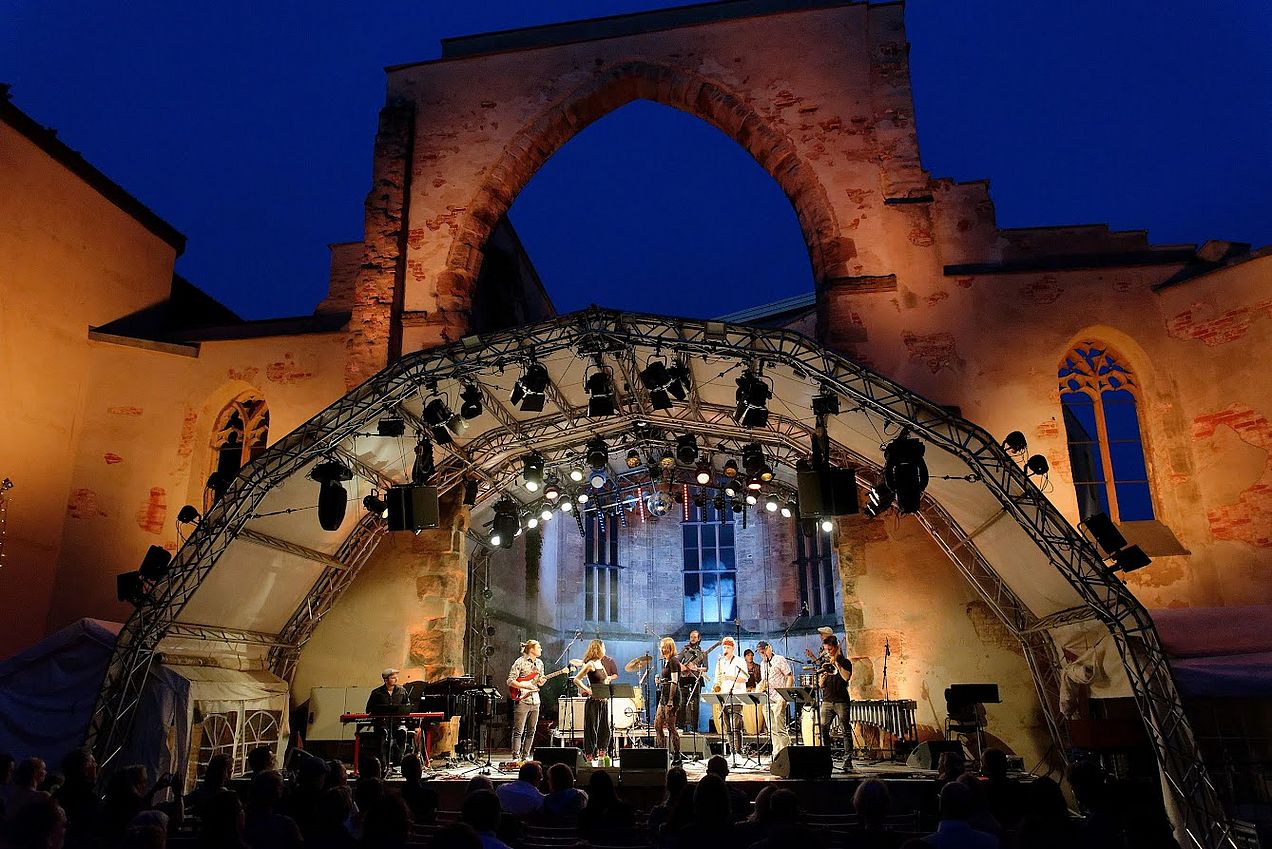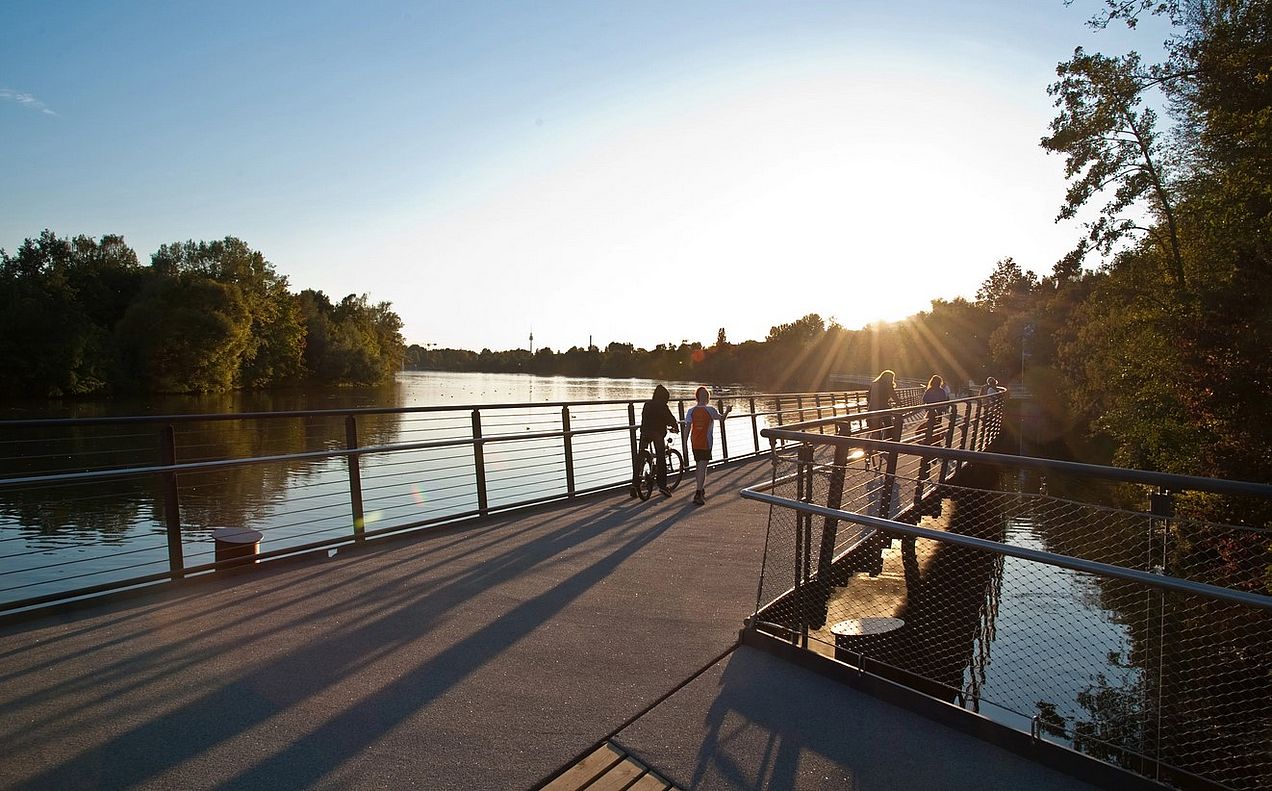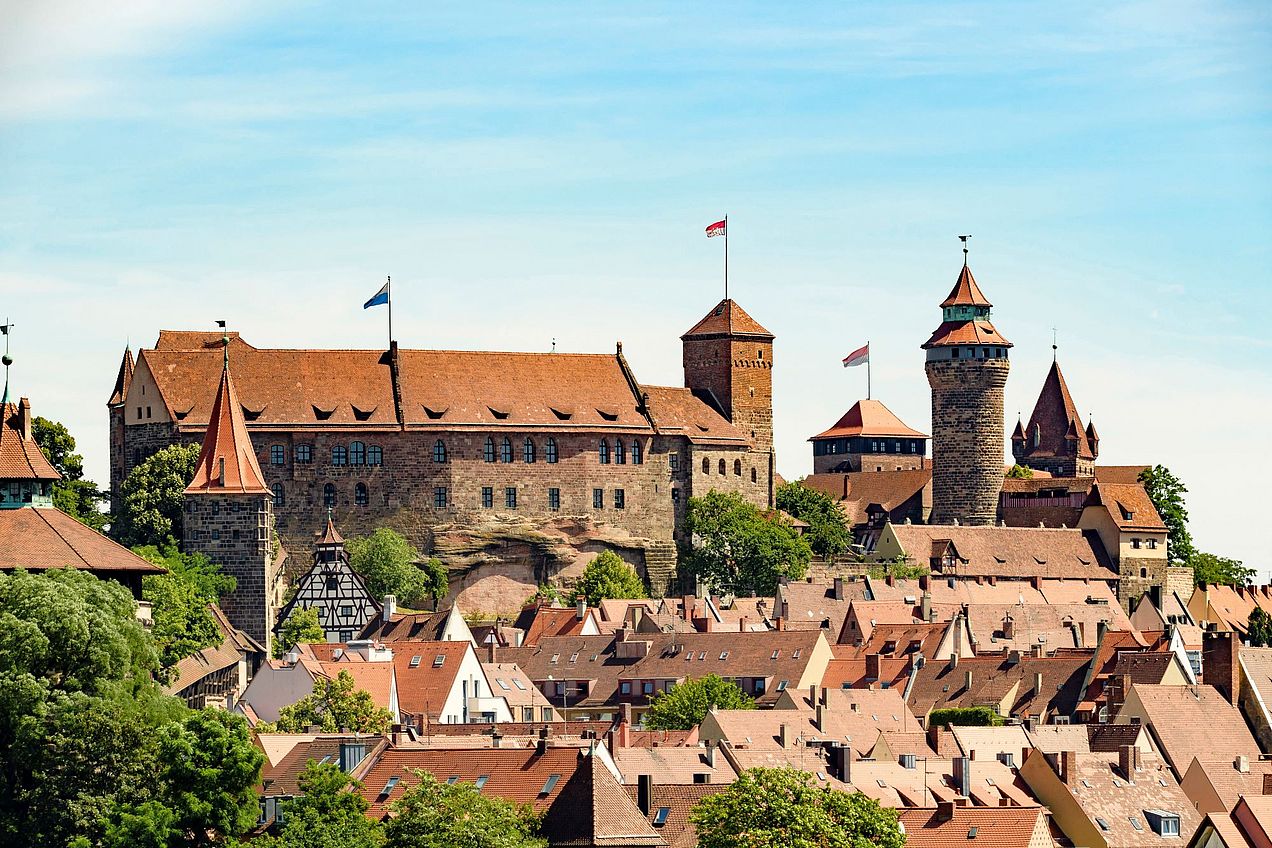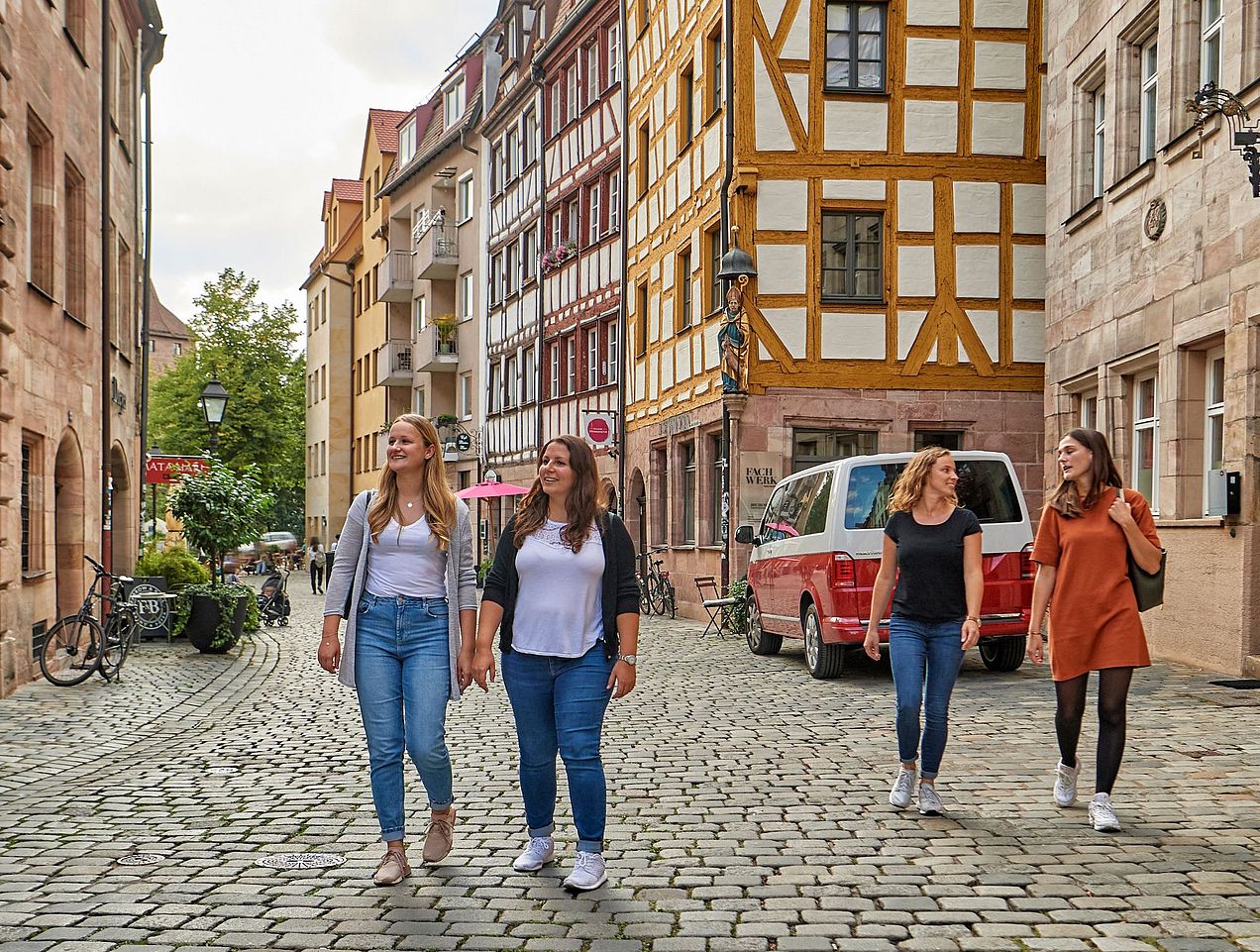Living and studying in Nuremberg
Over 30,000 students are enrolled at Nuremberg's state and private universities. In addition to natural sciences and technology, courses are offered in the fields of business, media, social sciences and liberal arts. From time-honoured institutes to start-up centres, you will find an agile innovation ecosystem here: the ideal environment for creative minds from academia and the arts, research and business.
Although Nuremberg is not a typical student city, it does offer a lot for young people - especially when you consider the entire metropolitan region with Erlangen and Fürth. It's not overcrowded, but there's always something going on!
Public transport
To get from A to B quickly, you can use public transport as well as your bike. You can reach your destination quickly by underground, suburban railway, tram and numerous bus lines.
The NürnbergMOBIL app helps you to keep track of everything and quickly find the best connections. As public transport officially only runs until around 1 a.m., you can also take the "Nightliner" to get home at night on weekends. These buses leave every hour from the main station in all directions, even to Erlangen and Fürth!
Cost of living and accommodation
The cost of living in Nuremberg is well below that of Munich or Berlin. Rents in particular are still affordable compared to other major cities.
The Studierendenwerk can help you find accommodation: https://www.werkswelt.de/wohnen
You can also find adverts specifically for music students in our classifieds (in German)-
Music, the Arts and Culture

In addition to the many museums, such as the Germanisches Nationalmuseum, the Memorium Nuremberg Trials or the Toy Museum, there are many cultural events in Nuremberg that offer an exciting and varied programme. The State Theatre, the Meistersingerhalle, the Nuremberg Symphony Orchestra, the Jazz-Studio and many more offer something for every taste.
The fact that Nuremberg is a very musical city is demonstrated not only by the music academy alone, which organises over 300 events a year, but also by two professional orchestras, a large jazz scene and many festivals. The successful Klassik Open Air, the NUEJAZZ Festival, Rock im Park, the Bardentreffen, The Blue Night, and the Nuremberg Pop Festival attract large numbers of visitors to the Franconian metropolis every year.
Free time activities

As well as a wide range of cultural facilities and a lively pub and club scene, Nuremberg and its surroundings offer green spaces for relaxation, mountains, rivers and lakes for hiking, climbing and swimming.
The beautiful Dutzendteich lake is ideal for walking, jogging, sailing and pedal boating. Lake Wördersee ( photo ), just a stone's throw from the University of Music, is ideal for swimming, relaxing or studying.
For hiking and climbing enthusiasts, Franconian Switzerland is not far away. It is one of the best developed climbing areas in the world.
For more information: https://tourismus.nuernberg.de/erleben/freizeit-sport-umgebung/
Historic Old Town

Tourists from all over the world come to Nuremberg to marvel at its impressive medieval buildings. The undisputed landmark is the majestic Imperial Castle, now a museum and youth hostel. Below the castle is the old town with its picturesque half-timbered houses, especially the Weißgerbergasse. Once home to many tanneries, it is now full of bars and restaurants.
Nuremberg is also known as "Dürer City", as the artist Albrecht Dürer lived in one of the picturesque half-timbered houses near the Tiergärtnertor from 1509 until his death in 1528.
Even if you've never been to Nuremberg, you've probably heard of the market square with the Church of Our Lady, from where the Christ Child opens the annual Christkindlesmarkt - one of the most famous Christmas markets in Germany. As well as the usual delicacies, you can sample local specialities such as gingerbread, red beer and Nuremberg sausages.
For more information: https://tourismus.nuernberg.de/
Nuremberg and its history
Tourists from all over the world flock to Nuremberg - partly to admire its beautiful medieval old town, but mainly because of its eventful history. Once one of the most important cities in the Holy Roman Empire, Nuremberg played a crucial role during the Nazi era.
Nuremberg was the site of Nazi Party rallies, and after the Second World War and the end of the Third Reich, the Nuremberg Trials in 1946 saw the main perpetrators, including Hermann Göring and Rudolf Hess, convicted.
Architectural remnants of the Nazi era include the Zeppelin Field, used by the Nazis to demonstrate their power, and the Nazi Party Rally Grounds with the Congress Hall. There is now a documentation centre.
Further information: https://tourismus.nuernberg.de/sehen/museen/verpflichtende-vergangenheit/

